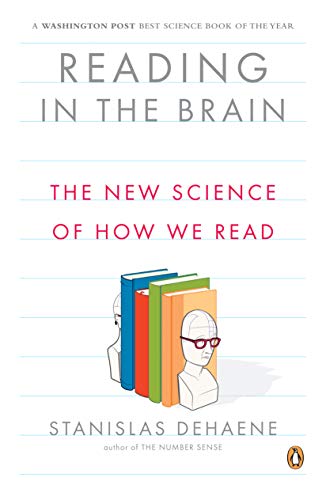Reading in the Brain: The New Science of How We Read by Stanislas Dehaene Link to heading
Summary Link to heading
“Reading in the Brain: The New Science of How We Read” by Stanislas Dehaene explores the cognitive neuroscience behind one of humanity’s most remarkable capabilities—reading. Dehaene delves into how our brains have adapted to interpret written language, a skill that is a relatively recent development in human history. He examines the processes involved as our brain translates symbols on a page into meaningful language, discussing the evolution of reading systems and how they engage various brain regions. The book integrates insights from psychology, linguistics, and neuroscience to provide a comprehensive view of how reading is both a cultural and biological evolution.
Review Link to heading
Stanislas Dehaene’s “Reading in the Brain” is heralded for its in-depth analysis and clear presentation of complex scientific concepts. The book is well-regarded for taking a multidisciplinary approach, using examples and studies to illuminate how neurons and synapses collaborate to create the miracle of reading. A notable strength of the book is its ability to engage readers from various backgrounds, offering compelling insights that appeal to both academics and laypersons. Some critiques may arise from the book’s detailed scientific explanations, which could be dense for those without a strong background in neuroscience.
Key Takeaways Link to heading
- Neuronal Recycling: The brain repurposes existing neural circuits to accommodate and process new skills like reading.
- Visual Word Form Area: This region of the brain is crucial for recognizing letters and words and is a focal point in understanding reading’s neural basis.
- Cultural vs. Biological Evolution: Dehaene highlights how reading is a cultural invention that our biological brains have adapted to.
- Reading Development and Dyslexia: The book also addresses how variations in brain structure and function can affect reading ability, providing insight into conditions like dyslexia.
Recommendation Link to heading
“Reading in the Brain” is highly recommended for educators, psychologists, neuroscientists, or any readers interested in the science behind reading and cognition. It is particularly beneficial for those who seek a deeper understanding of how reading works at the neurological level and how such insights can inform teaching methods and interventions for reading difficulties.
